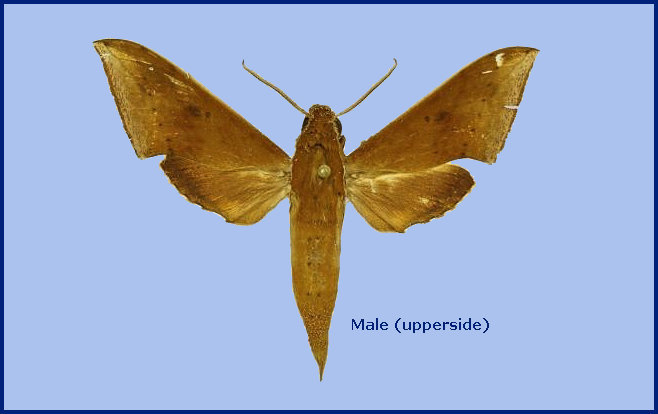
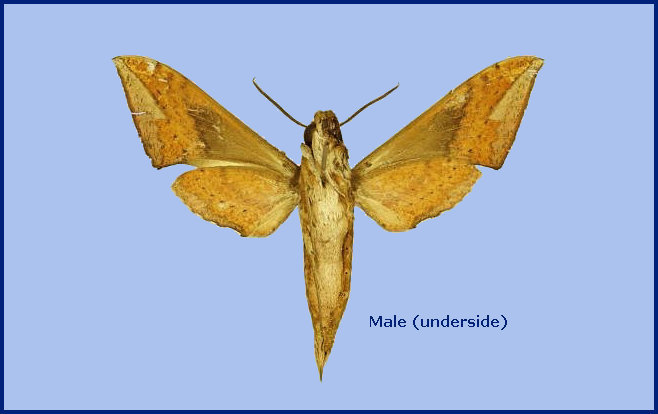
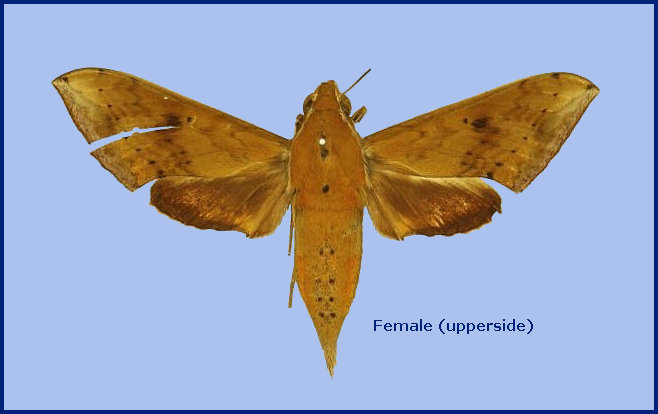
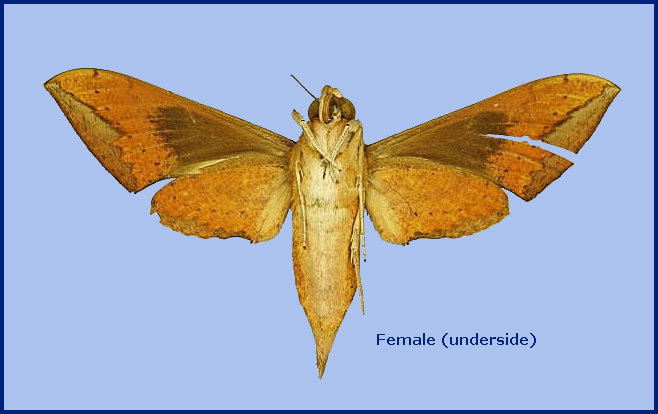
Zonilia acuta Walker, 1856, List of the specimens of lepidopterous insects in the collection of the British Museum 8: 195. Type locality: Hindostan [India].
Synonym. Zonilia acuta Walker, 1856.
Synonym. Rhagastis hayesi Diehl, 1982.
Note. Synonymized with Chaerocampa velata by Hampson, [1893], Fauna Brit. India 1: 91. Reinstated as a species and transferred to Rhagastis by Rothschild & Jordan, 1903, Novit. zool. 9 (suppl.): 792 (key), 794.
Wingspan: 66-72mm. Superficially similar to Rhagastis velata but immediately distinguishable by the shape of the labial palp segment 2. Labial palp segment 1 with large apical cavity; segment 2 strongly narrowed towards the base, triangular. Upperside of abdomen with a pair of vestigial or well-developed lateral golden stripes. Outer row of forebasitarsal spines doubled and trebled. Forewing apex slightly falcate. Upperside similar to Rhagastis aurifera; in fresh specimens, there is an olive-green tone that is lost with age, the ground colour fading to orange-brown/ochreous hue. Hindwing upperside with submarginal band narrower than in Rhagastis aurifera, less dilated anterior to M3 (Sphingidae Taxonomic Inventory, 2021). The black zigzag lines on the forewing upper side appear more obvious than in Rhagastis velata. Forewing underside with postmedial dots smaller than in Rhagastis aurifera; submarginal band not joined to the basal area. The patch on the forewing underside submarginal area tends to be gray and much wider than in Rhagastis velata; the blackish zigzag medial line on the forewing and hindwing underside is more obvious; hindwing underside without a small black discal spot. Female similar to the male but with broader wings and paler ground colour; patterns of the forewing and hindwing more faded than in the male (Jiang et al., 2024).
Male genitalia: Similar to that of Rhagastis velata, but uncus and gnathos shorter; sacculus/harpe longer and more sinuous than in Rhagastis velata and Rhagastis aurifera. Valve with 5-7 large stridulatory scales in two irregular rows that appears as a single row. Phallus thicker than in Rhagastis velata, asymmetrical, the left process narrow and often very short, with one of the sides contracted into a sharp tooth. The right process long, rather broad, somewhat palmate and multidentate apically (Sphingidae Taxonomic Inventory, 2021).
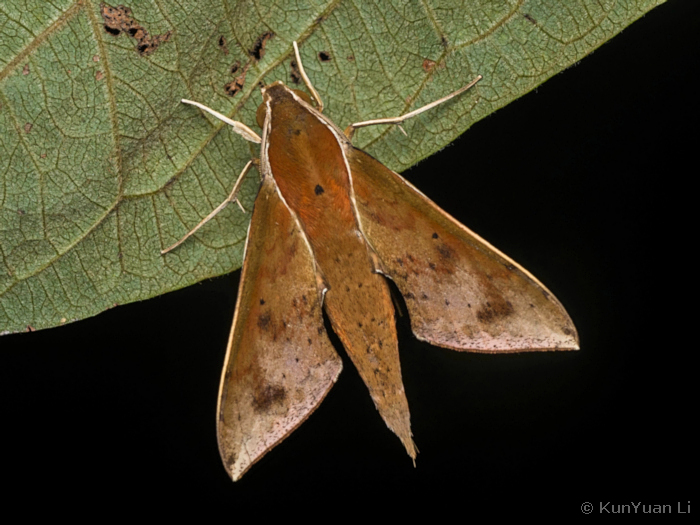
From 500 to 600m altitude in China, higher in India (above 1200m).
China: 7.iv (Guangxi); 13-27.iv (Hainan); 28.iv (Guizhou); 8.vii (Guizhou).
OVUM: Unknown.
LARVA: Unknown.
PUPA: Unknown.
Larval hostplants. Unknown.
Unknown.
China: Guizhou (Maolan Natural Reserve, Libo County, 560m; Banzhai, 580m); Yunnan; Guangdong (Guangzhou; Zhaoqing); Guangxi (Ziyuan, 1400m); Hainan (Jianfengling National Forest Park, Ledong County).
India (Western Ghats, Karnataka; Uttarakhand; Sikkim; Assam; Meghalaya), Nepal, Bhutan, eastern Bangladesh, China (Guizhou; Yunnan; Hainan), Myanmar/Burma, Thailand, Laos, Kampuchea/Cambodia, Vietnam (Le & Vu, 2024), Philippines (Palawan), Malaysia (Peninsular), Indonesia (Sumatra; Java).
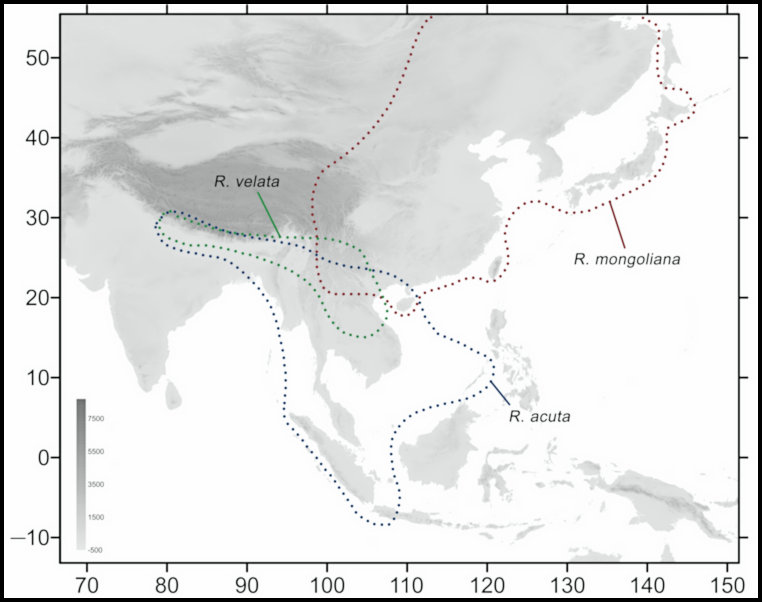
Map: Distribution of three ungrouped species of genus Rhagastis found in China. The blue dotted line indicates the range of R. acuta, the red dotted line indicates the range of R. mongoliana, and the green dotted line indicates the range of R. velata (© Jiang, Wang, Xu, Kitching, Huang, Hu & Xiao, 2024).
Oriental region. Pleistocene refuge: Tropical South East Asia.
 Return to Sphingidae of the Eastern Palaearctic species list
Return to Sphingidae of the Eastern Palaearctic species list